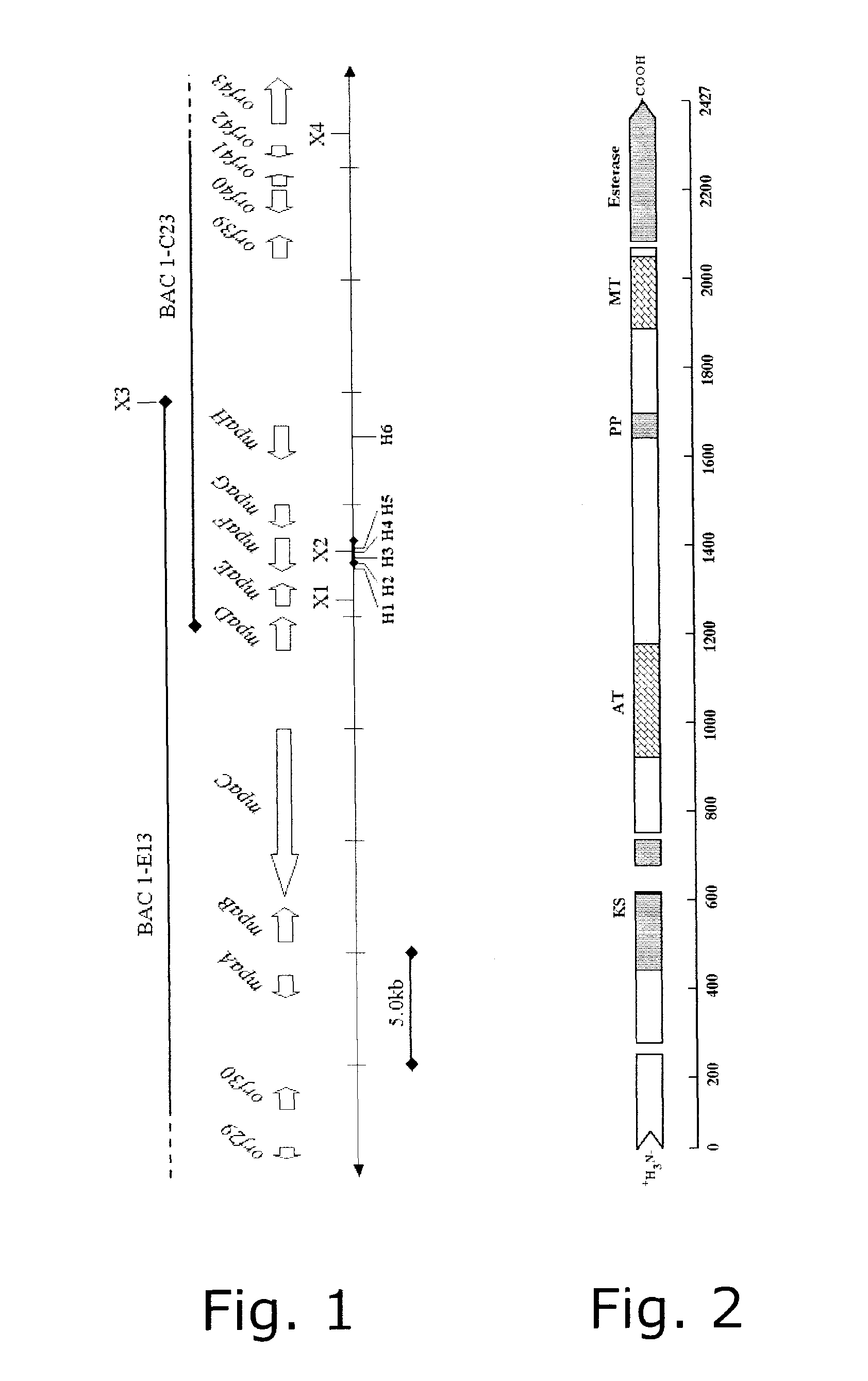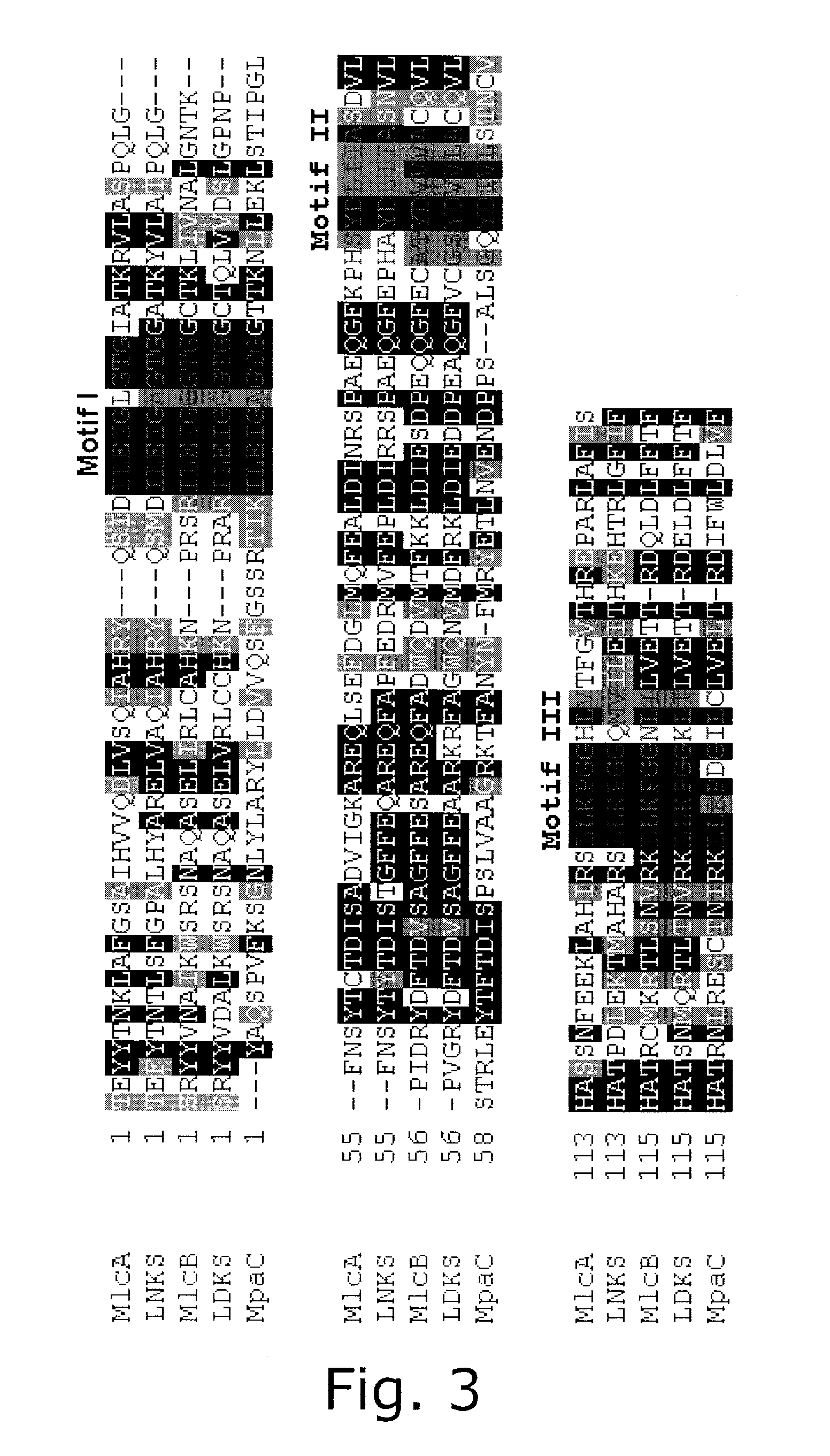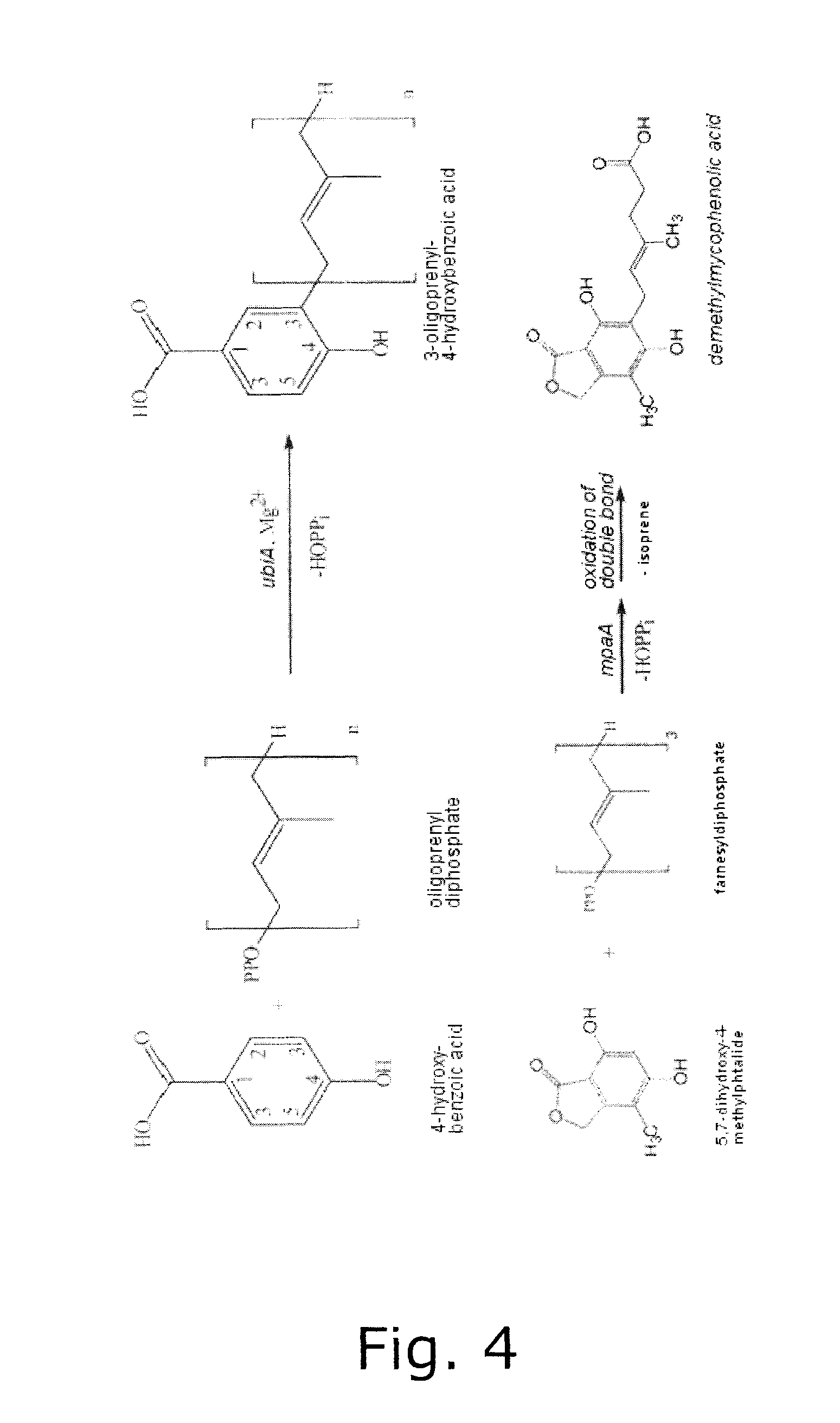DNA encoding protein and methods of using same
a technology of dna and encoding protein, which is applied in the field of fungal secondary metabolites, can solve the problems of inability to find information about the enzymes responsible for mpa synthesis in the fungus, and the current production of mpa is relatively laborious and inefficient, and achieves the effect of improving the efficiency of the fermentation process and reducing the number of mpa
- Summary
- Abstract
- Description
- Claims
- Application Information
AI Technical Summary
Benefits of technology
Problems solved by technology
Method used
Image
Examples
example 1
[0075]P. brevicompactum BAC Library
[0076]P. brevicompactum, strain IBT 23078, was obtained from the strain collection at Center for Microbial Biotechnology at the Technical University of Denmark. Chromosomal DNA was extracted from this strain. Amplicon Express subsequently constructed a 10 fold coverage BAC library on basis of the chromosomal P. brevicompactum DNA (PBBAC). The total number of clones in the library was 3,072.
example 2
[0077]Screening of PBBAC Using IMPDH Primers
[0078]A first approach in the attempt of isolating the MPA gene cluster was to screen the library for PKS enzymes using degenerated primers designed on basis of various conserved PKS domains. Several PKS gene fragments from genomic DNA were amplified with these primers and sequenced. However, based on alignments none of these gene fragments belonged to the non-reducing PKS with methyltransferase activity, as needed for MPA PKS. Hence, the gene fragments could not be used as probes for MPA PKS in PBBAC.
[0079]The second approach was to find out if P. brevicompactum encodes more than one IMPDH gene and if that was the case, then hopefully the MPA gene cluster could be found as neighbouring sequences to one of these IMPDH gene copies. The background for this hypothesis being that the extra IMPDH gene copy may be the prerequisite for the existence of an enzymatic pathway that leads to synthesis of a compound (MPA) that inhibits the very activit...
example 3
[0089]Sequencing of the MPA Gene Cluster
[0090]The process of sequencing the BAC clones suspected to contain the MPA gene cluster was outsourced to MWG Biotech. The company constructed a shotgun library of the BAC with an average insert size of app. 2-3 kb followed by random picking of a number of clones for end-sequencing. The size of the BAC insert was estimated to be app. 100 kb.
[0091]The sequence returned from MWG Biotech was assembled into four large contigs. These were separated by gaps that were later closed by sequencing. The annotation of BAC 1-C23 showed that 5 ORFs (designated mpaD to mpaH in FIG. 1) had similarity to polyketide biosynthesis genes. However, no putative PKS genes could be identified, as the gene cluster was located very near the end of the insert. Chances were thus that the remaining part of the MPA gene cluster could be found in another BAC. “BAC walking” subsequently indeed allowed identification of the remaining part of the MPA gene cluster.
[0092]FIG. 1 ...
PUM
| Property | Measurement | Unit |
|---|---|---|
| incubation time | aaaaa | aaaaa |
| incubation time | aaaaa | aaaaa |
| incubation time | aaaaa | aaaaa |
Abstract
Description
Claims
Application Information
 Login to View More
Login to View More - R&D
- Intellectual Property
- Life Sciences
- Materials
- Tech Scout
- Unparalleled Data Quality
- Higher Quality Content
- 60% Fewer Hallucinations
Browse by: Latest US Patents, China's latest patents, Technical Efficacy Thesaurus, Application Domain, Technology Topic, Popular Technical Reports.
© 2025 PatSnap. All rights reserved.Legal|Privacy policy|Modern Slavery Act Transparency Statement|Sitemap|About US| Contact US: help@patsnap.com



